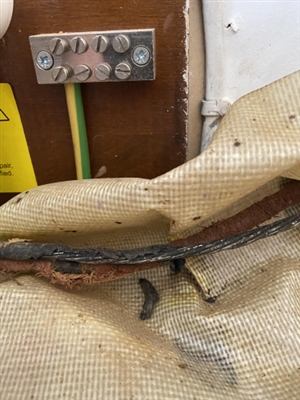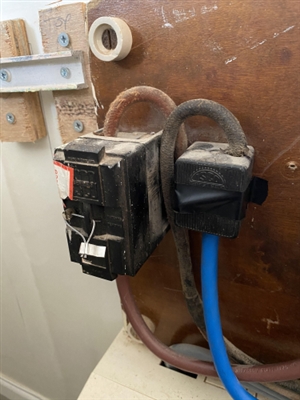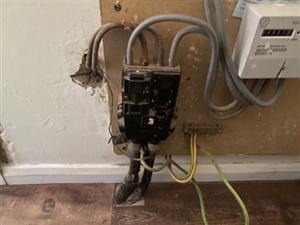UKPN Service head (60A fuse) TN-S is located in ground floor flat with no access for first floor. Riser cables (VIR badly degraded) run inside brickwork up to another cutout fuse (60A). Modern cables then loop into smart meter. UKPN say they are not responsible for the riser - EDS 08-1103 section 6.1 - even though EPN as it was then installed it (although the cutout is theirs and technically only they are allowed to remove the fuse - my thoughts?). UKPN won't pay for the work so that sits with the client unless anyone can tell me differently?
So, what's the best way to achieve this? Need to upgrade the cable to 25mm2 (and probably ask to upgrade fuse to 100A) and it's not practical to start digging out the walls, not least because prolonged access to downstairs is not really an option. Therefore external? Best method/option?
Thanks in advance
Images - degraded VIR cable; upstairs cutout; downstairs service head




